The Phonetic Style – Forming Means Questions
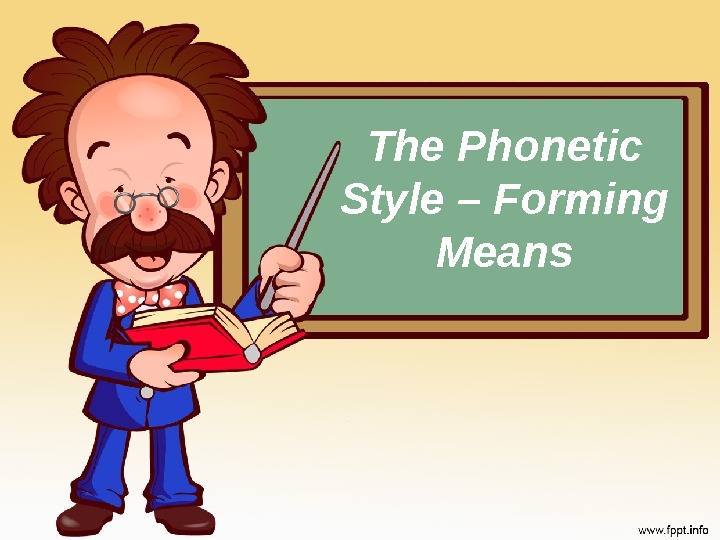

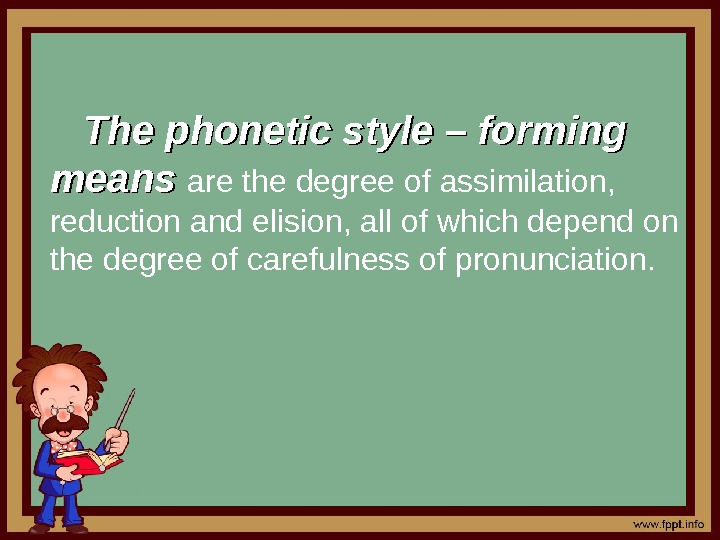
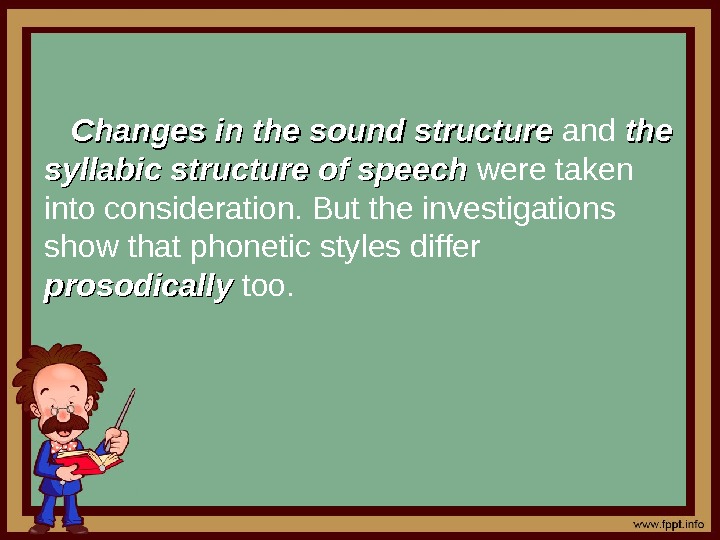


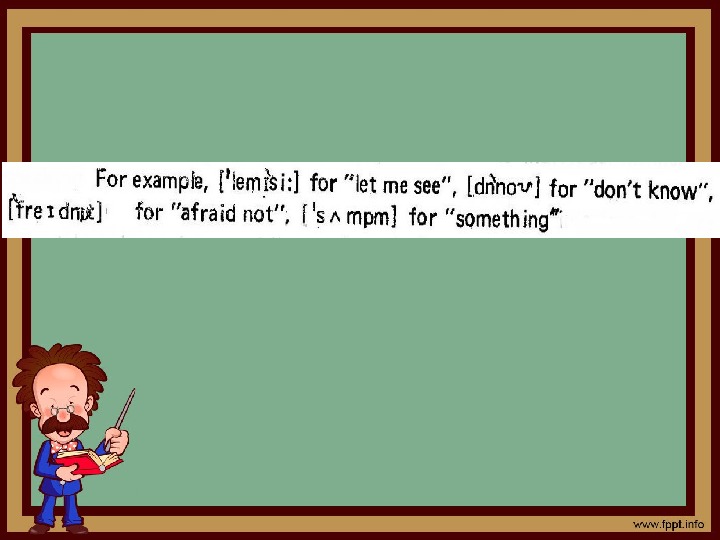

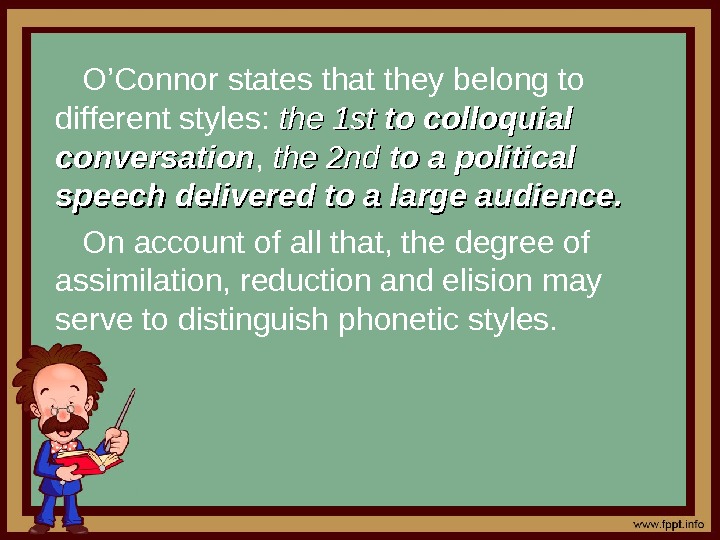
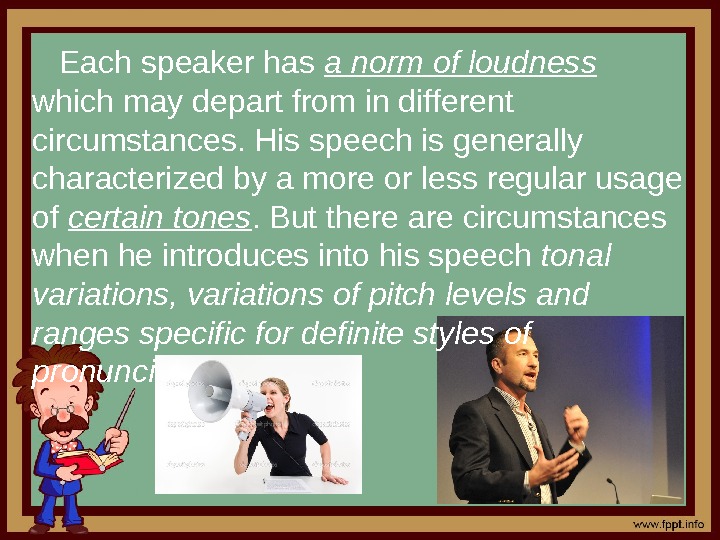

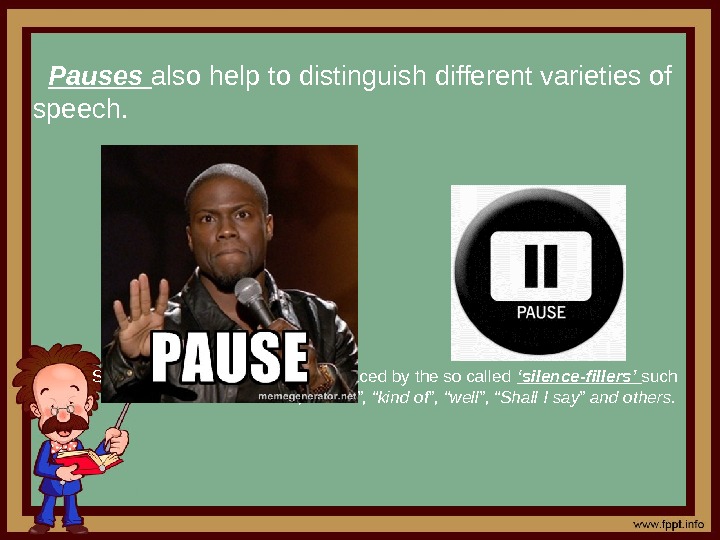

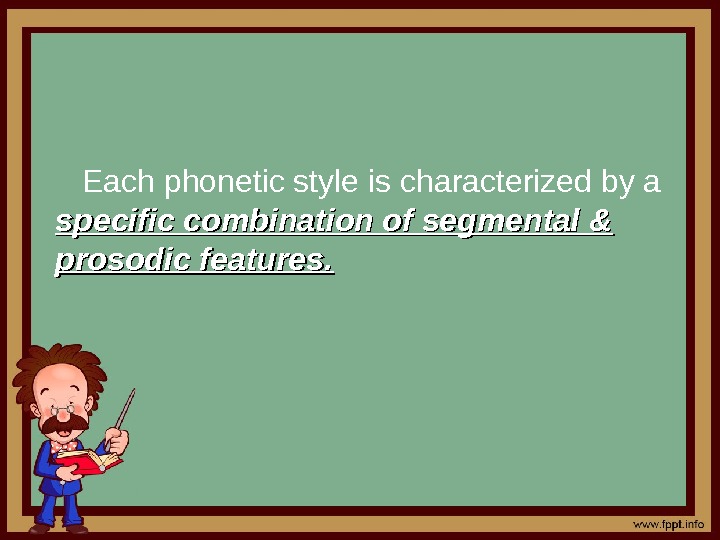

- Размер: 4.7 Mегабайта
- Количество слайдов: 15
Описание презентации The Phonetic Style – Forming Means Questions по слайдам
 The Phonetic Style – Forming Means
The Phonetic Style – Forming Means
 Questions • 1) What features may the phonetic styles have? • 2) Enumerate those prosodic features which enable people to distinguish between different phonetic styles.
Questions • 1) What features may the phonetic styles have? • 2) Enumerate those prosodic features which enable people to distinguish between different phonetic styles.
 The phonetic style – forming means are the degree of assimilation, reduction and elision, all of which depend on the degree of carefulness of pronunciation.
The phonetic style – forming means are the degree of assimilation, reduction and elision, all of which depend on the degree of carefulness of pronunciation.
 Changes in the sound structure and the syllabic structure of speech were taken into consideration. But the investigations show that phonetic styles differ prosodically too.
Changes in the sound structure and the syllabic structure of speech were taken into consideration. But the investigations show that phonetic styles differ prosodically too.
 Assimilation, reduction and elision are natural phonetic phenomena , which occur in any pronunciation style. These phenimena are caused by an unconscious economy of effort, known as “ the law of least effort ” , which is universal for all languages.
Assimilation, reduction and elision are natural phonetic phenomena , which occur in any pronunciation style. These phenimena are caused by an unconscious economy of effort, known as “ the law of least effort ” , which is universal for all languages.
 The speaker is to a definite extent governed by his audience in choice of vocabulary units, grammatical structures, tempo of speech, distinctiveness of articulation, and so on.
The speaker is to a definite extent governed by his audience in choice of vocabulary units, grammatical structures, tempo of speech, distinctiveness of articulation, and so on.

 Elision, reduction and assimilation may, therefore, signal stylistic differences. Take the sentence “We can trust him to do it well” said in 2 different ways:
Elision, reduction and assimilation may, therefore, signal stylistic differences. Take the sentence “We can trust him to do it well” said in 2 different ways:
 O’Connor states that they belong to different styles: the 1 st to colloquial conversation , the 2 nd to a political speech delivered to a large audience. On account of all that, the degree of assimilation, reduction and elision may serve to distinguish phonetic styles.
O’Connor states that they belong to different styles: the 1 st to colloquial conversation , the 2 nd to a political speech delivered to a large audience. On account of all that, the degree of assimilation, reduction and elision may serve to distinguish phonetic styles.
 Each speaker has a norm of loudness which may depart from in different circumstances. His speech is generally characterized by a more or less regular usage of certain tones. But there are circumstances when he introduces into his speech tonal variations, variations of pitch levels and ranges specific for definite styles of pronunciation.
Each speaker has a norm of loudness which may depart from in different circumstances. His speech is generally characterized by a more or less regular usage of certain tones. But there are circumstances when he introduces into his speech tonal variations, variations of pitch levels and ranges specific for definite styles of pronunciation.
 Each speaker has a norm of speech tempo as well.
Each speaker has a norm of speech tempo as well.
 Pauses also help to distinguish different varieties of speech. Some of the pauses are often replaced by the so called ‘silence-fillers’ such as “I mean”, ”sort of”, “kind of”, “well”, “Shall I say” and others.
Pauses also help to distinguish different varieties of speech. Some of the pauses are often replaced by the so called ‘silence-fillers’ such as “I mean”, ”sort of”, “kind of”, “well”, “Shall I say” and others.
 Some speakers, when they are greatly involved in what they say and are very emphatic , introduce no pauses until they run out of breath. Their speech sounds abnormal & careless.
Some speakers, when they are greatly involved in what they say and are very emphatic , introduce no pauses until they run out of breath. Their speech sounds abnormal & careless.
 Each phonetic style is characterized by a specific combination of segmental & prosodic features.
Each phonetic style is characterized by a specific combination of segmental & prosodic features.
 Thank you for your attention!
Thank you for your attention!
